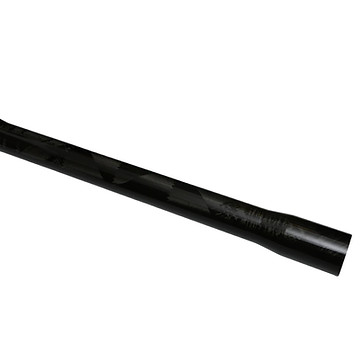
Filament Wound
Carbon Fiber Tubes
Acen Carbon Fiber specializes in Filament Winding Carbon Fiber Tubes, max tube length of 8300mm; it is possible to create customized filament wound carbon profiles.
-
Excellent stiffness and strength
-
Good compressive stress
-
Great torsion stress
-
Multiple Axial Angles can be designed to reach the best performance
Filament Wound Process
Filament winding is a manufacturing process in which continuous carbon/fiberglass fibers are wound under tension at specification angles.
Filament winding hollow structures are incredible strength. By crossing-weaving continuous roving of carbon fiber, fiberglass, or aramid fibers and embedding them in a resin matrix.
A filament winding profile is designed according to the force conditions of the product. Consequently, the products have good airtightness, well-arranged fiber alignment, precision, lightweight, high reliability, and stable product quality. Fibers are fully leveraged through this technique. With automated production, filament winding is able to achieve high speed, which results in increased production efficiency.
Filament winding
Filament winding is a fascinating process used to manufacture strong and lightweight composite structures, like pipes, pressure vessels, and even rocket casings. Here's a simplified rundown:
Mandrel Preparation:
The process begins with a mandrel, a cylindrical mold. It could be made of metal or a temporary material like foam. This mandrel determines the inner shape of the final product.
Filament Placement:
Continuous strands of reinforcing material, usually fiberglass or carbon fiber, are impregnated with a resin (usually epoxy) and wound onto the mandrel in a precise pattern. The winding pattern can vary, affecting the strength and properties of the final product.
Mandrel Removal:
After curing, the composite shell is separated from the mandrel. If a temporary material like foam was used, it may be dissolved or removed through other means, leaving the final product hollow.
Release Agent Application:
To prevent the composite material from sticking to the mandrel, a release agent is applied. This could be a wax or other non-stick coating.
Curing:
Once the desired thickness and pattern are achieved, the composite is left to cure. This involves allowing the resin to harden and bond with the reinforcing fibers. The curing process may take place at room temperature or involve the application of heat.
Finish and Inspection:
The product may undergo finishing processes like sanding or coating for a smoother surface. Quality control inspections are performed to ensure that the dimensions and properties meet the specifications.






